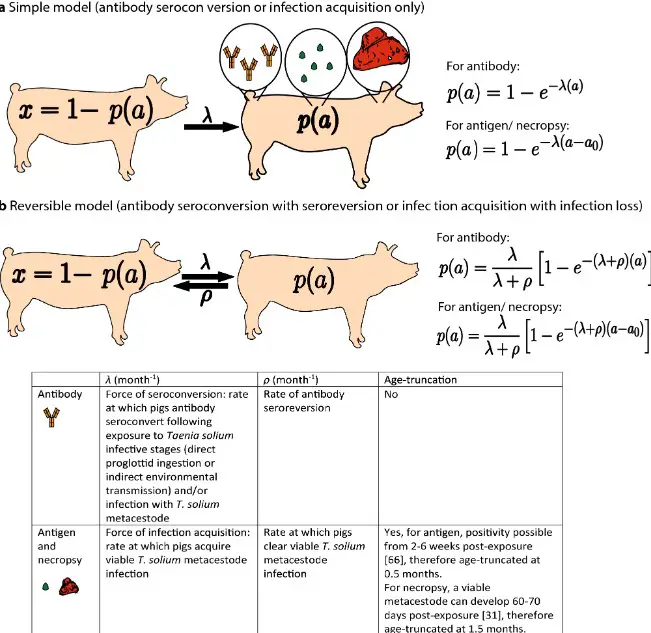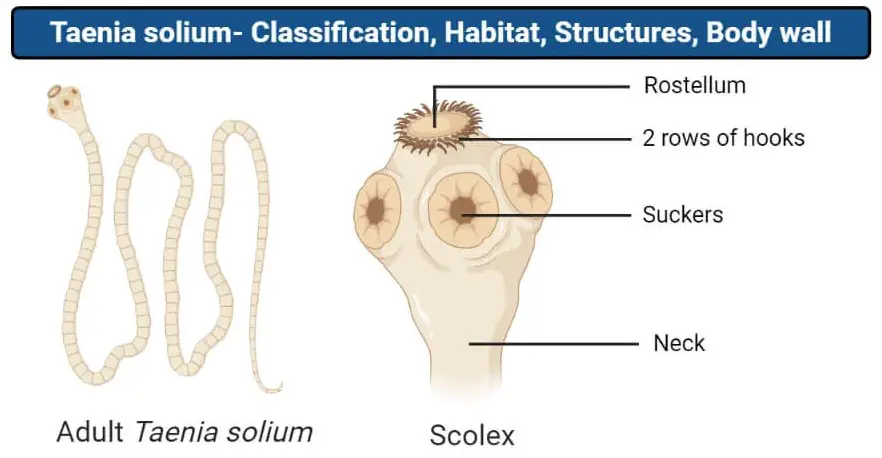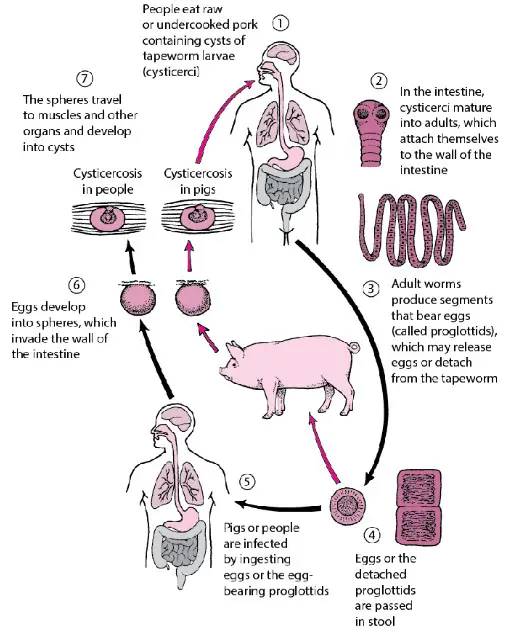The human body can be host to a variety of parasites, including the two most common species of tapeworms: Taenia solium and Taenia saginata. While both of these parasites are similar in many ways, there are some distinct differences between them that are important to understand.
In this blog post, we will explore the differences between Taenia solium and Taenia saginata, including their life cycles, symptoms, and treatment.
Similarities between taenia solium and taenia saginata

Taenia solium and Taenia saginata, both members of the tapeworm family, have some similarities, but there are also some key differences between them. Both are parasitic flatworms that can cause an infection known as taeniasis.
Taenia solium is known as the pork tapeworm, while Taenia saginata is the beef tapeworm. Both species are found in the human intestine, but Taenia saginata is more common in humans than Taenia solium.
Taenia solium is more likely to be found in pigs, while Taenia saginata is found in cows and other livestock. Additionally, Taenia solium can cause cysticercosis in humans, a condition that Taenia saginata does not cause.
Differences in structure of taenia solium and taenia saginata

The two species of tapeworms, Taenia solium and Taenia saginata, may look similar, but there are several key differences between them. Taenia solium is the pork tapeworm, and Taenia saginata is the beef tapeworm.
Taenia solium is larger, reaching up to 4 meters in length, while Taenia saginata is smaller, reaching up to 2 meters in length. In addition, Taenia solium has a longer lifespan, living up to 15 years, while Taenia saginata has a shorter lifespan, living up to 10 years. Finally, Taenia solium is more dangerous to humans, as it can cause cysticercosis, a potentially life-threatening disease, while Taenia saginata does not.
Knowing these differences is important for both prevention and treatment of tapeworm infections.
Differences in life cycle of taenia solium and taenia saginata

The life cycle of Taenia solium and Taenia saginata are vastly different, as both of these parasites have different host species and lifestyles. Taenia solium, also known as the pork tapeworm, is a human intestinal parasite that can be contracted through the consumption of undercooked pork. This tapeworm’s eggs are then passed through the human host’s feces, and can be ingested by pigs, where the larvae develop into an adult stage.
This tapeworm’s eggs are then passed through the human host’s feces, and can be ingested by pigs, where the larvae develop into an adult stage. On the other hand, Taenia saginata, also known as the beef tapeworm, is an intestinal parasite that can be contracted through the consumption of undercooked beef. This tapeworm’s eggs are passed through the human host’s feces, and can be ingested by cattle, where the larvae develop into an adult stage.
The differences in life cycle between these two species of tapeworms make them distinct from one another, and are important to consider when discussing the prevention and treatment of tapeworm-related infections.
Symptoms of taenia solium and taenia saginata
Taenia solium and Taenia saginata are two closely related parasitic worms, also known as tapeworms. They both belong to the same family of parasites, but have some distinct differences that should be noted.
Taenia solium, or pork tapeworm, is the most common form of tapeworm found in humans and is mainly contracted through the consumption of undercooked pork products. The symptoms of Taenia solium include abdominal pain, nausea, vomiting, and weight loss. Taenia saginata, or beef tapeworm, is the second most common form of tapeworm found in humans and is contracted through the consumption of undercooked beef products.
Symptoms of Taenia saginata include abdominal pain, constipation, fatigue, and irritability. The main difference between Taenia solium and Taenia saginata is the source of infection, as Taenia solium is mainly contracted through the consumption of undercooked pork products, while Taenia saginata is mainly contracted through the consumption of undercooked beef products.
Diagnosis and treatment of taenia solium and taenia saginata
Taenia solium and Taenia saginata are two species of tapeworm that are parasitic in humans. They are both members of the Taeniidae family, and while they do share some similarities, there are also some important differences. Taenia solium, also known as the pork tapeworm, is transmitted by the ingestion of undercooked pork contaminated with the larvae of the tapeworm.
Taenia solium, also known as the pork tapeworm, is transmitted by the ingestion of undercooked pork contaminated with the larvae of the tapeworm. Taenia saginata, also known as the beef tapeworm, is transmitted by the ingestion of undercooked beef that has been contaminated with the larvae of the tapeworm. While both of these tapeworms can cause a variety of digestive issues, Taenia saginata is usually less severe.
The most common symptom of Taenia solium infection is abdominal pain, while Taenia saginata can also cause nausea, vomiting, and loss of appetite. Diagnosis for taeniosis is made by the identification of proglottids in the stool, and treatment for both species of tapeworms is typically albendazole or praziquantel. It is important to note that while these medications will kill the adult tapeworms, they will not kill the larvae, so it is important to take preventative measures such as thoroughly cooking pork and beef to avoid reinfection.
Prevention of taenia solium and taenia saginata infections
Taenia solium and Taenia saginata are two closely related tapeworms. Although they are similar in many ways, it is important to be aware of the differences between these two parasites as they have different effects on human health. Taenia solium, commonly known as the pork tapeworm, is the more dangerous of the two and can cause significant health problems.
Taenia saginata, commonly known as the beef tapeworm, is generally less dangerous and is less likely to cause severe health issues. The most significant difference between the two parasites is in their life cycle.
Taenia solium is spread through the ingestion of undercooked or raw meat contaminated with the parasite’s eggs. This can occur when people eat pork that is not cooked thoroughly enough to kill the parasite’s eggs.
In terms of the effects on human health, Taenia solium is more dangerous as it is able to migrate to different parts of the body, including the brain, and cause serious neurological problems. Taenia saginata, on the other hand, generally remains in the digestive system and does not cause any significant health issues.
The best way to prevent infection with either of these parasites is to ensure that all meat is cooked thoroughly before consumption. This will help to kill any eggs or larvae that may be present in the meat and reduce the risk of infection.
Final Touch
In conclusion, Taenia solium and Taenia saginata are two species of tapeworms that are both parasites of humans. While both have similar life cycles, they differ in terms of the host they infect, the location of the cysts, and the size of the adult worms. Taenia solium infects humans and pigs, while Taenia saginata only infects humans.
Taenia solium infects humans and pigs, while Taenia saginata only infects humans. Taenia solium forms cysts in the brain, eyes, and muscles, while Taenia saginata forms cysts in the muscles. Finally, Taenia solium has an adult worm size of up to 10 meters, while Taenia saginata has an adult worm size of up to 5 meters.

